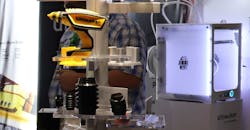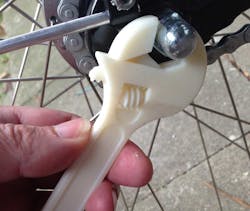Three Ways to Apply 3D Printing to Maintenance Management
At inception in the early 1980s, 3D printing appeared futuristic, but it has evolved since then. Today, it has gone mainstream and, gaining application in various industries.
According to this PWC survey, about 51% of industrial manufacturers in America are already using 3D printing in various ways compared to 35% two years back.
Along with prototyping and even some end use parts, employing additive technology on the factory floor allows engineers and technicians to manifest tools, jigs, and replacement parts with drastically shorter lead time. So if something breaks, all you need to is send the digital file of what you need to the machine and get printing. Below is a look at how 3D printers can be applied in maintenance management.
1) Maintenance professionals can use it to significantly reduce inventory costs
Stocking inventory can cost hundreds of thousands of dollars or more. And, there's no saying with 100% certainty exactly when a part would be needed to repair machinery. You could end up stocking an item for weeks or even months without using it.
So, one of the most obvious benefits of 3D printers in maintenance management is the quick creation of spare parts without the need to store them.
Imagine where even the most complex custom machine components are being manufactured on-demand in the fraction of the time it would normally take using traditional production methods. Add to that the advantage of cost reductions from eliminating bottlenecks like logistics and transportation issues, etc.
All of the above are possible with 3D printers.
3D printing is a good fit for expensive or critical parts that are important to avoid machine downtime but don't require stocking in large quantities.
2) Extend the lifespan of outdated assets and reduce the MTTR
An asset may be outdated but if it is still functional, it may retain a significant part in the production process. Such equipment can continue working for many years or decades. But, a problem arises when an important component is faulty and is no longer in production by the original manufacturer.
The above scenario is a typical occurrence in many plants and facilities - assets that are still useful but are idle and abandoned because replacement parts no longer exist.
Usually, the only solution is to buy a completely new and modern replacement for the entire machine. However, 3D printers can change the narrative. You now have the option of printing the part using similar or stronger material. This extends the lifespan of the asset and saves your company thousands of dollars that would otherwise have been spent on a complete replacement.
In the same PWC study mentioned earlier, 64% of manufacturers project that in the next three to five years, 3D printing will be consistently used to produce older, obsolete parts.
On the other hand, the asset in question may not be outdated. Instead, it is lying idle because for some reason, the spare parts for repair are not available. The vendor informs you that it will take a couple of weeks, at best, to receive it. After adding up procurement time and actual repair time, you may find that the MTTR (Mean Time To Repair) and resulting downtime is adding up to an unacceptable and unpleasant four weeks.
Fortunately, with 3D printers, it's possible to produce the same part with the same durability in a much shorter time frame. The result is reduced MTTR or downtime. This way, 3D printers can become an essential part of a preventive maintenance strategy.
3) Manufacturers can use it to quickly create prototypes
3D printers are now commonly used to create prototypes. It's becoming the tool of choice especially where the time frame for traditional production is too long. Manufacturers are now actively using it to create prototypes for different sectors from automobiles, to aircraft, and the energy sector.
The quick turnaround time of additive manufacturing is one of its most impressive advantages.
For instance, companies like GE and Siemens report that they are using 3D printing to solve age-old parts replacement and maintenance problems in the energy sector. Siemens says this technology allows it produce turbine parts "up to 90% faster" than it normally would using traditional production. And, it allows them achieve turnaround times 75% faster for research, development, and prototyping.
Essentially, 3D printers allow faster parts and products creation and shortens the time it takes to deliver these products to market.
Other benefits manufacturers are seeing is that this technology allows for better customization and redesign of these prototypes. It also allows them produce parts in one solid piece unlike in traditional manufacturing where components are usually several smaller parts bolted, fused, or welded together.
For smaller maintenance operations that are looking to use 3D printers, several options exist.
These printers range in size from smaller units that fit on a table to larger room-sized machines.
They can be purchased for a few thousand dollars or more and will manipulate a variety of materials including plastics, metals, and glass. But, the most important first step is to research and understand the capabilities of this technology and how it can impact your maintenance operations.
Bryan Christiansen is the founder and CEO at Limble CMMS. Limble is a modern, easy to use mobile CMMS software that takes the stress and chaos out of maintenance by helping managers organize, automate, and streamline their maintenance operations.
About the Author
Bryan Christiansen
Founder and CEO, Limble CMMS
Bryan Christiansen is the founder and CEO at Limble CMMS—an easy-to-use mobile CMMS software that takes the stress and chaos out of maintenance by helping managers organize, automate, and streamline their maintenance operations.

